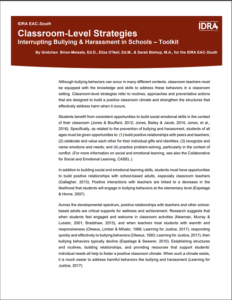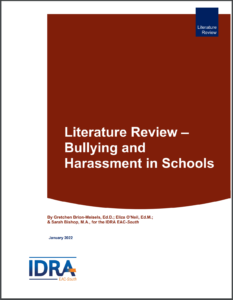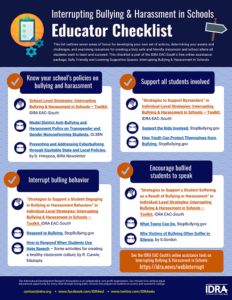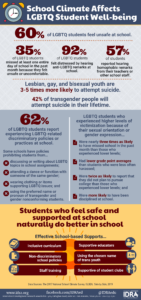This chapter provides classroom-level strategies and an educator checklist. This is Chapter 3 of the IDRA Interrupting Bullying & Harassment in Schools Online Technical Assistance Toolkit.
Classroom-Level Strategies: Interrupting Bullying & Harassment in Schools – Toolkit
 Although bullying behaviors can occur in many different contexts, classroom teachers must be equipped with the knowledge and skills to address these behaviors in a classroom setting. Classroom-level strategies refer to routines, approaches and preventative actions that are designed to build a positive classroom climate and strengthen the structures that effectively address harm when it occurs.
Although bullying behaviors can occur in many different contexts, classroom teachers must be equipped with the knowledge and skills to address these behaviors in a classroom setting. Classroom-level strategies refer to routines, approaches and preventative actions that are designed to build a positive classroom climate and strengthen the structures that effectively address harm when it occurs.
See PDF
Bullying and Harassment in Schools – Literature Review
 In order to ensure that all students have access to the everyday activities and lessons of school, educators must work to create safe educational spaces and prevent bullying and harassment in schools.
In order to ensure that all students have access to the everyday activities and lessons of school, educators must work to create safe educational spaces and prevent bullying and harassment in schools.
This literature review by Gretchen Brion-Meisels, Ed.D.; Eliza O’Neil, Ed.M.; & Sarah Bishop, M.A., for the IDRA EAC-South presents the research highlights on risk factors, school obligations under law, avoiding ineffective anti-bullying programs, fostering change, school climate, addressing bias-based harassment and addressing cyberbullying.
See PDF
Interrupting Bullying & Harassment in Schools Educator Checklist
 This list outlines seven areas of focus for developing your own set of actions, determining your assets and challenges, and examining resources for creating a truly safe and friendly classroom and school where all students want to learn and succeed.
This list outlines seven areas of focus for developing your own set of actions, determining your assets and challenges, and examining resources for creating a truly safe and friendly classroom and school where all students want to learn and succeed.
See PDF
School Climate Affects LGBTQ Student Well-being
 See highlights from the 2017 National School Climate Survey by GLSEN, a presentation by Side by Side (2019), and a report by The Williams Institute, UCLA School of Law (2019).
See highlights from the 2017 National School Climate Survey by GLSEN, a presentation by Side by Side (2019), and a report by The Williams Institute, UCLA School of Law (2019).
See infographic
Bullying and Teasing in Elementary School
If left unchecked or unaddressed, bullying and teasing during childhood may develop into dysfunctional behaviors that are detrimental to society and to the person. Bullying and teasing are harmful to the classroom environment by hindering the delivery of instruction and the social development of students.


